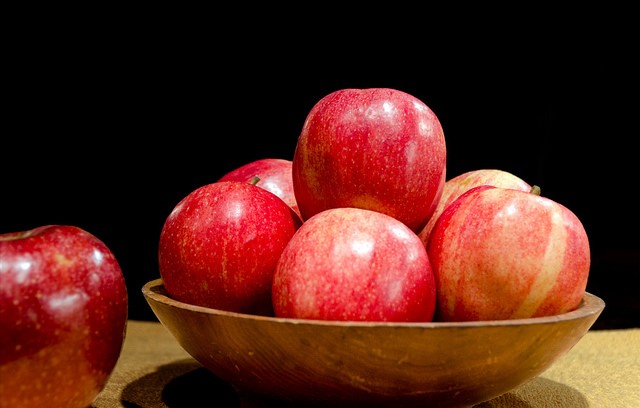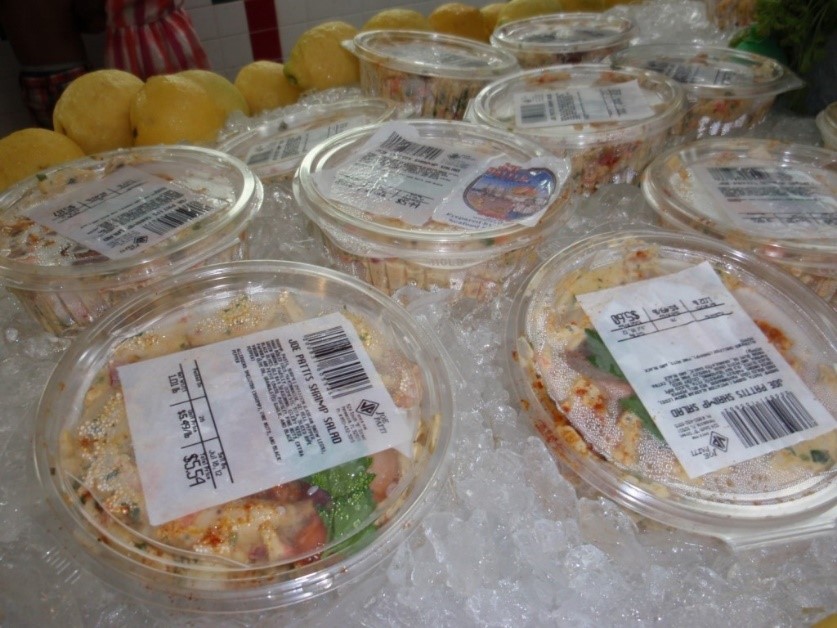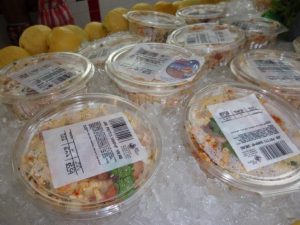
by Dorothy C. Lee | May 25, 2019
Herbs are like people; each herb has its own personality. Some herbs have bold flavors and should be used with care while others are mild and can be used more freely. View Shopping for Health: Herbs and Spices for more about this.
Herbs can be divided into two categories. Accent herbs and herbs that add character to dishes. Parsley, chives, and dillweed are a few of the accent herbs. They are milder in flavor and are often combined within the same recipe. The character herbs; basil, marjoram, rosemary, bay leaves, thyme, sage, and tarragon add dominant flavor to dishes.

Getting to Know Herbs
Photo source: Beth Bolles
A little heat releases the flavor of herbs. Herbs are bitter, however, when cooked too much. Add accent herbs during the last few minutes of cooking time. Character herbs, such as bay leaves, can withstand longer cooking times and usually are added at the beginning of the cooking process.
When selecting fresh herbs, look for plants with an all-over green color. Yellowing indicates old plants, while black, watery areas are a sign of bruising.
To refrigerate fresh herbs for future use, rinse herbs under cold water, pat dry, wrap in paper toweling and refrigerate in a plastic bag. To use, just cut or pull off leaves. Most refrigerated herbs will retain freshness for up to four days to a week.
Herbs can be frozen or dried for longer storage. To freeze fresh herbs, wash herbs, pat dry and freeze in airtight bags or containers. Frozen herbs should be thawed just before use. Fresh herbs can be dried for later use.
When experimenting with a new herb, pull off a leaf and crush it, let it warm in your hand. If it has a delicate aroma you can add more. If it is strong and pungent, use it sparingly. It is always easier to add more of an herb than subtract.
Dried herbs are more concentrated. When cooking with dried herbs use one third of the dried leaves to substitute for the fresh. One teaspoon of dried leaves is equal to one tablespoon of fresh. The fresh leaves are more pungent than the dried.
Cooking with Herbs
Try these herb blends to enhance the flavor of beef, poultry, and seafood dishes.
Salt Free Blend
1 Tablespoon mustard powder
2 teaspoons parsley
2 teaspoons onion powder
2 teaspoons thyme
1 Tablespoon garlic powder
2 teaspoons dill weed
2 teaspoons savory
2 teaspoons paprika
1 teaspoons lemon peel
Garden Blend
3 Tablespoons dried parsley
3 Tablespoons dried basil
3 Tablespoons dried thyme
3 Tablespoons dried marjoram
3 Tablespoons dried rosemary
3 Tablespoons dried chives
3 Tablespoons paprika
½ teaspoon garlic powder
“What is paradise, but a garden of herbs full of pleasure and nothing there but delights”
William Lawson, 1617

by Dorothy C. Lee | Dec 3, 2018

Holiday Stress
Photo source: Dorothy Lee
Tis the Season Merry and Bright:
From Thanksgiving to New Year’s Eve there are greater incidences of stress and tension related headaches and migraines. Family stresses, long shopping lines, and unrealistic expectations are enough to trigger tension headaches even in people who are not headache prone. To avoid these aches and pains a strategic plan may be necessary.
Planning is crucial not only at the holidays but throughout the year. Having a plan and being organized makes everything easier and more manageable. The key is to start early and don’t wait until December. This is where Christmas in July becomes useful thinking.
The following are some tips to help avoid stress during the holiday season. Make a schedule that includes all tasks you have to complete, how long you think each task will take, and when each task needs to be completed. This is why Santa makes a list and checks it twice.
- Start shopping early to reduce time wasted in long lines with early-bird hour sales
- To avoid long period of times wrapping, shop in stores where gift wrap is free
- Shop on-line while drinking your coffee in your pajamas
- Track your purchases in a notebook or in note section of your cell phone
- Prioritize your social events and don’t spread yourself too thin
- Use your computer for online postal mailing to avoid lines at the post office
- Instead of mailing gifts, order gifts on-line, and have gifts directly sent to gift recipient
- Practice relaxation and stretching to reduce stress
- Establish a spending limit and stick to it
Be realistic about how much you can do as nobody likes a cranky Santa. By following these tips, you will be as jolly as old Saint Nick.
Enjoy the holiday season with family and friends as it is the greatest gift you can give yourself. And remember, laugher is the best medicine for stress!
Happy Holidays!

by Dorothy C. Lee | Oct 3, 2018

Bowl of apples
Photo source: bing
October is National Apple Month. “A” is for Apple. We have all heard this childhood saying as well as other apple idioms.
The Fall season has arrived and along with cooler weather, shorter days, and autumn leaves comes the bounty of Fall………apples.
In Autumn, apples fill farmers market and grocery store bins with seasonal shades of red, green, yellow, and russet. Popular varieties of apples grown in the United States include Mcintosh, Fuji, Red Delicious, Gala, Crispin, Honeycrisp, Granny Smiths, and Golden Delicious.
Nutrition
A large raw apple contains about 95 calories. Apples provide fiber, vitamins, and minerals. Apples are low in calories and high in antioxidants.
Selection
Each apple variety has its own distinctive flavor and texture. When purchasing apples choose a variety suitable for your intended use. Best apples for eating cooking baking The surface of the apple should be smooth, firm, unbroken, and free from bruises.
Preparation
Apples are delicious eaten raw. Simply rinse, cut into quarters and remove core from each section and slice. Use a vegetable peeler or a sharp knife to peel apples for cooking. To core apples for cooking push an apple corer through center of fruit from top to bottom, pull out core and stem. Coat peeled or sliced apples with lemon juice to prevent darkening. A bag of medium sized apples yields about 3 cups diced fruit or 2 ½ cups sliced fruit.
Cooking with Apples
Apples are the most versatile of all fruits. They are suitable for a variety of cooking techniques and can be used in a variety of recipes. Apples can be baked, grilled, poached, and even sautéed. Add diced apples to salads or dried and added to granola cereal. Sauté to accompany meat dishes and add to pancakes or waffle batter. For desserts, pair apples with a variety of cheeses.
Storage
Apples ripen faster at room temperature than in the refrigerator. Store apples in the refrigerator in a plastic bag to help retain moisture.
Celebrate the bounty of Fall with apples at their peak of flavor.

by Dorothy C. Lee | Aug 24, 2018

Photo source: UF/IFAS Northwest District
Fish and shellfish are easy to prepare and swimming with nutritive value. Fish and shellfish have become an even more important part of the diet as people turn to more healthful eating. People are choosing fish and shellfish more frequently for several reasons. It is economical, versatile, high in nutritive value, quick and easy to prepare, and it tastes good.
When purchasing fish, look for bright, clear, bulging eyes; reddish or pink gills; tight, shiny scales; firm, elastic flesh that springs back when pressed; and a pleasant saltwater-like odor.
Fish and shellfish are best if cooked the day of purchase but can be stored no more than two days in the coldest part of the refrigerator, preferably on ice. Frozen fish and shellfish should be kept solidly frozen until ready to thaw. Frozen seafood will remain fresh for four to six months. Cook seafood immediately upon thawing. Do not thaw fish at room temperature or in warm water because it loses moisture and flavor. Never refreeze uncooked fish.
Most fish and shellfish can be cooked using a variety of methods. Fish and seafood can be broiled, grilled, deep-fried, poached, steamed, baked, pan-fried, and sautéed. Care must be taken not to overcook fish or seafood. Fish are done when the flesh, pierced at its thickest point with a fork, flakes easily, and turns from translucent to opaque. Proper cooking develops flavor, softens connective tissue, and makes protein easier to digest.
Many seafood aficionados prefer flavoring their dishes with small amounts of salt, pepper, and occasionally lemon. The delicate taste of seafood blends exceptionally well with a variety of herbs, spices, and seeds, as long as these seasonings are used sparingly.
The next time you are in the neighborhood of your local seafood market, stop in. Remember that fish and shellfish from the Gulf are nutritious, economical, quick and easy to prepare, and taste great. So, enjoy local fish and seafood today!
Sunshine Fillets
2 pounds red snapper fillets or other fish fillets, fresh or frozen
2 teaspoons grated orange peel
1 teaspoon salt
3 tablespoons butter or margarine, melted
Dash nutmeg
2 tablespoons orange juice
Dash pepper
Thaw frozen fillets. Cut fillets into 6 portions. Place fish in a single layer, skin side down, in a well-greased baking dish, 12 x 8 x 2 inches. Combine remaining ingredients. Pour sauce over fish. Bake in a moderate oven, 350°F, for 20 to 25 minutes or until fish flakes easily when tested with a fork. Makes 6 servings.
Shrimp Kabobs
1 pound frozen raw, peeled, cleaned shrimp
1/3 cup butter or margarine, melted
1 teaspoon salt
2 large green peppers, cut into 1-inch squares
Dash pepper
8 slices bacon, cut into sixths
3 cans (4 ounces each) button mushrooms, drained
Thaw frozen shrimp. Alternate shrimp, bacon, mushrooms, and green pepper on 48 skewers or round toothpicks, approximately 3 inches long. Place kabobs on a well-greased broiler pan. Combine remaining ingredients. Pour half of the sauce over kabobs. Broil about 4 inches from source of heat for 5 to 7 minutes. Turn carefully and baste with remaining sauce. Broil 5 to 7 minutes longer or until shrimp are pink and tender. Makes approximately 48 hors d’oeuvres.

by Dorothy C. Lee | Jul 30, 2018

Instant Pot settings display. Photo source: Wendy Meredith
An Instant Pot Pressure Cooker is a small electronic multi-cooker appliance that can function as a pressure cooker, slow cooker, rice cooker, steamer, warmer, and more. It is often referred to as an Instant Pot. It is currently the hottest trend in home cooking.
An Instant Pot Cooker can prepare just about any type of food you can imagine. Poultry, beef, and pork recipes, soups, stews, bread, and even desserts.
Considering today’s fast paced lifestyle the Instant Pot is a time saving kitchen helper. Spend a few minutes preparing the recipe ingredients, program the Instant Pot and relax. The Instant Pot cooking method takes the stress out of long cooking times and of meal preparation.
Instant Pot cookers are available in a variety of sizes, styles, and functions. The function of an Instant Pot is based on the model purchased. Many brands are available. Basic functions present in most models consist of slow cooker, pressure canner, steamer, rice cooker, yogurt maker, egg cooker, sauté or browner, and warmer.
When purchasing a multi-cooker consider the usage and quantity of food to be prepared. A 3-quart cooker is just the right size for single servings. Family sizes are available as 6-quart (4-6 servings) or 8 -quart (6-8 servings).
The benefits of an Instant Pot cooker are numerous. No need for constant or frequent stirring, no worry about overcooking or burning, saves energy based on quick cooking times required for recipes and less small kitchen appliances needed for preparation.
Traditionally beef stew and less tender cuts of meat take hours of cooking to render tender. The Instant Pot Cooker dishes up these delicious dishes in under an hour.
Corned Beef Cabbage*
2 pounds corned beef
2 cups chicken broth
2 cups water
3 bay leaves
8 peppercorns
¼ cup apple cider vinegar
8 medium red or white potatoes
8 cups coarsely sliced cabbage
Place beef in cooker. Add stock, water, bay leaves, peppercorns, and vinegar in cooker. Cook for 90 on meat/stew setting. Remove corned beef. Add vegetables; cook on high pressure for 4-5 minutes.
*Follow directions listed on Instant Pot instruction manual for programming cooker.
Instant Pot cooking is easy, economical and quick.
Recipe adapted from Cooks’ Essentials.









